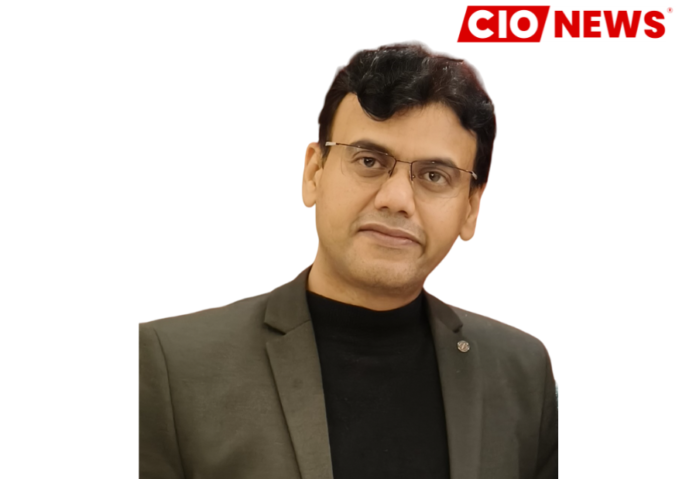Addressing the threats posed by deep fakes requires a multifaceted approach involving technology, policy, and public awareness.
This is an exclusive article series conducted by the Editor Team of CIO News with Kuldeep Singh, Alternate CISO & Dy. GM (IT-Security) at NTPC Limited.
In recent years, the rise of deep fakes has sparked significant concern and intrigue within the realms of technology, media, and security. A portmanteau of “deep learning” and “fake,” deep fakes are synthetic media in which a person in an existing image or video is replaced with someone else’s likeness. Leveraging advanced machine learning techniques, particularly generative adversarial networks (GANs), deep fakes can create highly realistic and convincing false representations.
More than 75% of Indians present online and surveyed by cybersecurity company McAfee have seen some form of deep fake content over the last 12 months, while at least 38% of the respondents surveyed have encountered a deep fake scam during this time, the company said in a survey released in April 2024.
Major Risks:
While the technology behind deep fakes holds potential for various positive applications, such as in entertainment, education, and digital art, the darker implications are more pressing and problematic.
- Misinformation and Disinformation:
Deep fakes can be used to spread false information, manipulate public opinion, and create fake news. A realistic video of a political figure saying or doing something they never did can have serious repercussions on public trust and democracy.
- Personal Privacy and Security:
Individuals can be targeted with deep fakes for malicious purposes, including harassment, defamation, and non-consensual, explicit content. The ability to fabricate realistic images and videos raises significant concerns about privacy violations and psychological harm.
- Legal and Ethical Issues:
The creation and distribution of deep fakes pose substantial legal and ethical challenges. Current laws often struggle to keep pace with rapid technological advancements, making it difficult to regulate and mitigate the misuse of deep-fake technology effectively.
Examples of Deep Fakes
- Political Misinformation:
Example: In 2018, a deep fake video of Barack Obama surfaced in which he appeared to be giving a public service announcement. The video was actually a project by Jordan Peele, highlighting the dangers of deep-fake technology.
Impact: This video underscored how deep fakes could be used to spread misinformation and manipulate public opinion, potentially influencing elections and destabilizing governments.
- Celebrity Impersonation:
Example: A deep fake video featuring actress Scarlett Johansson’s face superimposed onto explicit content was widely circulated online without her consent.
Impact: This example illustrates the severe invasion of privacy and emotional distress deep fakes can cause, as well as the potential for reputational damage to individuals targeted by malicious deep fake creators.
- Corporate Fraud:
Example: In 2019, cybercriminals used an AI-generated voice deep fake to impersonate the CEO of a UK-based energy firm, convincing an executive to transfer €220,000 to a fraudulent account.
Impact: This incident highlights the potential for deep fakes to be used in sophisticated social engineering attacks, posing significant risks to businesses and financial institutions.
- Social media manipulation:
Example: Deep fake videos of Mark Zuckerberg, Nancy Pelosi, and other high-profile figures have been created and shared on social media platforms like Facebook and Twitter, often with the intention of discrediting them or spreading false narratives.
Impact: These cases demonstrate how deep fakes can be weaponized to erode trust in public figures and institutions, complicating efforts to discern truth from fiction online.
Combating Deep Fakes
Addressing the threats posed by deep fakes requires a multifaceted approach involving technology, policy, and public awareness.
- Technological Solutions:
Researchers are developing advanced detection tools to identify deep fakes. These tools analyze inconsistencies in visual and audio data, such as unnatural facial movements or audio-visual mismatches, to determine the authenticity of content.
- Legislation and Regulation:
Governments and regulatory bodies are working to create laws that address the creation and distribution of malicious deep fakes. Effective legislation can help deter potential misuse and provide clear legal recourse for victims.
- Public Awareness and Education:
Educating the public about the existence and dangers of deep fakes is crucial. Increased awareness can help individuals critically evaluate the content they encounter and reduce the impact of deceptive media.

In conclusion, deep fakes represent one of the most significant challenges in the digital age. By understanding the technology, recognizing the risks, and actively working towards solutions, society can navigate the complexities of this powerful yet perilous innovation.

Also read: Achieving Rapid Outcomes with AI-Driven Cloud Analytics
Do Follow: CIO News LinkedIn Account | CIO News Facebook | CIO News Youtube | CIO News Twitter
About us:
CIO News is the premier platform dedicated to delivering the latest news, updates, and insights from the CIO industry. As a trusted source in the technology and IT sector, we provide a comprehensive resource for executives and professionals seeking to stay informed and ahead of the curve. With a focus on cutting-edge developments and trends, CIO News serves as your go-to destination for staying abreast of the rapidly evolving landscape of technology and IT. Founded in June 2020, CIO News has rapidly evolved with ambitious growth plans to expand globally, targeting markets in the Middle East & Africa, ASEAN, USA, and the UK.
CIO News is a proprietary of Mercadeo Multiventures Pvt Ltd.






